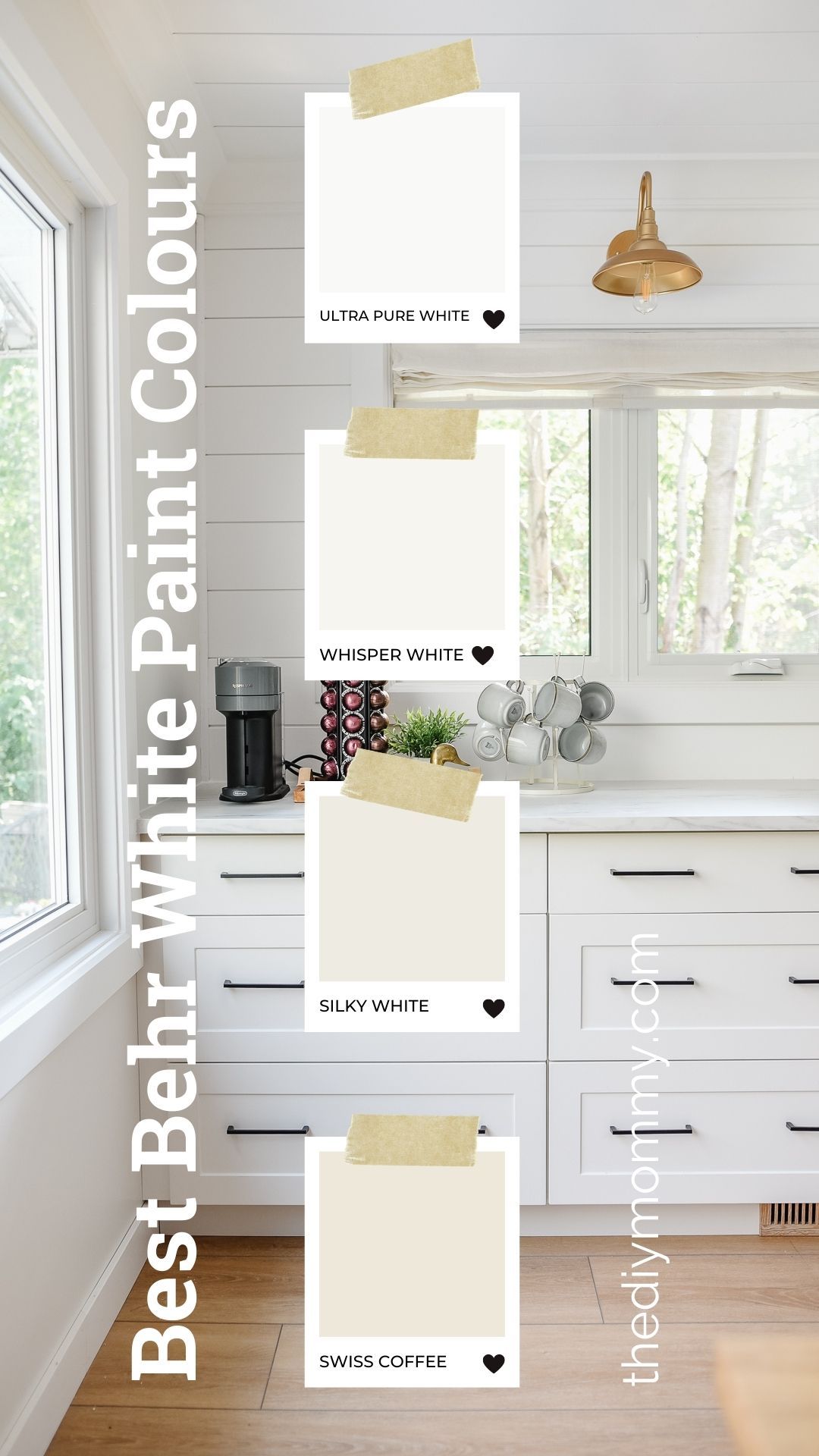It’s time to unlock the hidden potential of white paint! This guide will be your trusty companion as you navigate the world of white, unraveling the secrets of undertones and finishes for a flawless finish. Let’s dive into the art of using white paint to create spaces that exude style and sophistication.
Why White Paint Isn’t One-Size-Fits-All
Believe it or not, there’s a whole lot more to painting with white than just grabbing the first can labeled “white.” The secret lies in understanding undertones – those subtle hints of color that peek through the white, creating warmth, coolness, or crispness.
Think of undertones like the secret ingredient in a recipe. They’re whispers of pink, yellow, blue, or gray that can completely change the vibe of a room.
Unmasking the Undertones
Spotting undertones is easier than you think!
- Grab a paint chip of the white you’re considering.
- Hold it against a plain white piece of paper in natural light.
- Observe: Against the pure white background, you’ll start to see those sneaky undertones reveal themselves.
Warm Undertones: Imagine the cozy glow of a fireplace. Warm undertones like pink, yellow, and orange can bring that same inviting feeling to a room.
Cool Undertones: Picture a refreshing breeze on a clear day. Cool undertones like blue, green, and gray create a sense of calm and sophistication.
Choosing the Perfect White: Matchmaking for Your Home
Picking the perfect white paint is a bit like matchmaking—you want to find the one that complements your existing décor, the mood you want to create, and even the “personality” of your home’s style.
1. Consider Your Existing Finishes
- Flooring: Warm wood floors tend to pair well with whites that have yellow or beige undertones. Cool marble or tile, on the other hand, might look best with whites that have gray or blue undertones.
- Countertops: The same principle applies to countertops. Warm granite might call for a warm white, while sleek quartz could harmonize with a cooler white.
- Cabinets: If you have painted cabinets, their color will also influence the best white for your walls.
2. Discover Your Home’s White Paint “Type”
To make choosing the right white even easier, think about your home’s overall style. Each “type” tends to work best with specific undertones:
- Crisp White: (Clean, modern, minimalist) – Look for whites with blue or gray undertones.
- Creamy White: (Traditional, cozy, inviting) – Warm undertones like yellow or pink are ideal.
- Modern White: (Sleek, contemporary, often with a slightly industrial edge) – Neutral whites with subtle gray undertones work beautifully.
3. Test, Test, Test
Don’t skip this crucial step! Paint a small section of your wall with the white you’ve chosen and observe it throughout the day.
- Natural Light: How does the white look in different areas of the room as the sunlight changes?
- Artificial Light: What about in the evening with lamps on?
This will give you a true sense of how the undertones play out in different lighting conditions.
Beyond the Walls: The Power of Layered White
Once you’ve mastered the art of choosing the right white for your walls, consider layering in different shades and finishes of white to add depth and dimension.
- Trim: Use a slightly brighter white on trim and moldings to make them pop against the wall color.
- Ceilings: A very subtle difference in white on the ceiling (perhaps just a shade lighter or with a hint more gray) can create a sense of expansiveness.
- Sheen: Combine matte walls with semi-gloss trim for subtle contrast and visual interest.
Painting Over White: What You Need to Know
Yes, you absolutely can paint over white paint! But there are a few key things to keep in mind to ensure a flawless outcome.
When to Prime Before Painting White
Primer acts as a base coat, creating a smooth surface for your white paint to adhere to. While you might be able to skip primer in some cases, it’s often essential for a professional-looking finish.
Always Prime When:
- Painting new drywall or untreated wood: These surfaces are very porous and will absorb paint unevenly without primer.
- Covering dark colors: Primer acts as a barrier, preventing the old color from bleeding through your new white paint.
- Dealing with stains: A stain-blocking primer will keep watermarks, crayon marks, or other blemishes from showing through.
- Painting slick surfaces: Glossy surfaces like metal or plastic need primer to help the paint adhere properly.
You Might Be Able to Skip Primer If:
- You’re painting over a light color that’s in good condition. However, it’s still a good idea to spot-prime any imperfections.
How Many Coats of White Paint?
The number of coats you’ll need depends on a few factors:
- Surface Porosity: More porous surfaces like drywall will require more coats than less porous surfaces like previously painted walls.
- Color Transition: Going from a dark color to white will usually require more coats (sometimes three or even four) to completely cover the old color.
- Paint Quality: Higher-quality paints tend to have better hiding power, which means you might be able to get away with fewer coats.
General Rule of Thumb: Two coats of white paint are usually sufficient for most projects. However, it’s always a good idea to test a small area first to see how the coverage looks.
The Takeaway: Embrace the Art of White
White paint is anything but boring. By understanding undertones, layering techniques, and proper painting practices, you can harness the power of white to create spaces that are both stylish and sophisticated.
- How to Get Rid of Mushrooms in Your Lawn: A Complete Guide - April 24, 2025
- How to Get Rid of Ground Hornets: A Safe and Effective Guide to Eliminating Nests - April 24, 2025
- How to Get Rid of German Roaches Fast: DIY Methods for Quick Control - April 24, 2025










